The Berkshires Bowling Alley that Inspired "The Big Lebowski"
It’s been 36 years since the release of The Big Lebowski, the irreverent cult comedy by Joel and Ethan


Every big city has its own urban soundtrack. Tokyo, the world’s most populated metropolis, has a unique rhythm that plays in a loopy, mechanical yet orderly cadence. Sounds originate from all over, day and night, coming together to create a surprisingly harmonious and often beautiful melody.
Each season offers different sounds to decipher. In this article, we’ll explore 8 sounds that are a part of Tokyo’s summer soundtrack. You can follow the enclosed links to hear an example of the sounds being described.
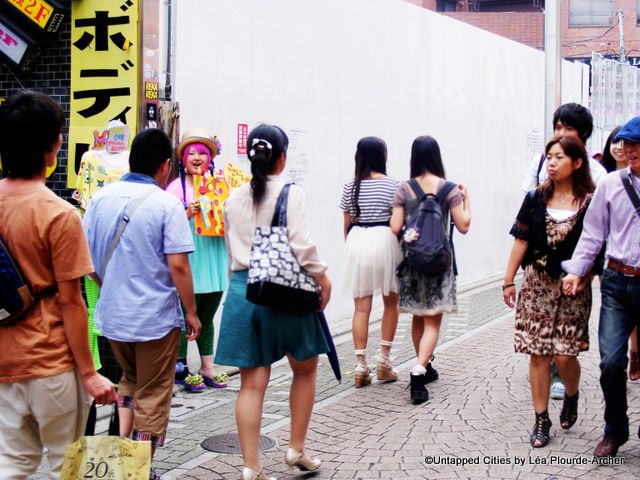
Takeshita Dori shop staff
Takeshita Dori is a busy pedestrian street in the teen- and tourist-friendly neighborhood of Harajuku. Here, dozens of colorful shops sell all the elements required to create daring outfits. In order to attract people into their stores, employees stand outside, imploring them to come in for a look. Though some callers keep the volume low and may only be heard once within sight, others plead loudly, sometimes using microphones in order to drown out the voices of others. A melodious cacophony ensues.
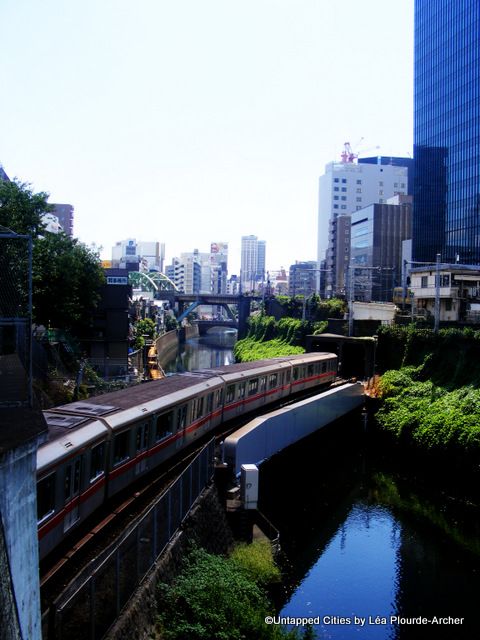
Trains and rail transportation
In a large portion of the world, modern urban living has been dominated by cars. Not in Tokyo. Here, millions of people board trains every day. The summer season is especially busy, with many Japanese people traveling around the country during the Obon vacation period. In busy stations like Shinjuku, the continual flow of trains and people creates a rhythm that is punctuated by many particular sounds:
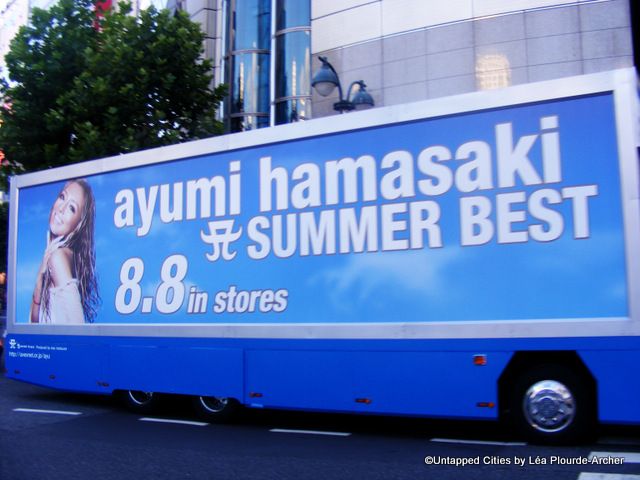
Music Buses
Japanese pop singers face lots of competition when trying to become famous and sell albums. One popular way to get attention is to use buses as moving billboards, with posters of their faces covering each side. Samples of music are played through speakers, letting people hear a glimpse of their songs.
These buses are often seen in the popular teen hangout spots of Ginza, Akihabara, Shibuya and Shinjuku.
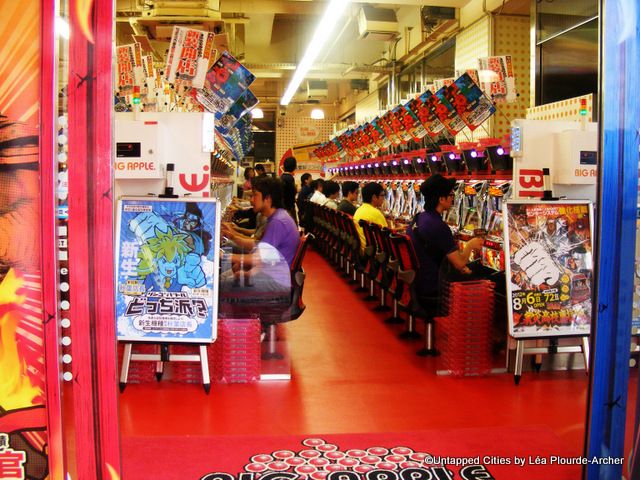
Pachinko parlors
Pachinko arcade machines are a popular leisure activity in Japan. People go to the parlors to unwind for a few minutes, which frequently turn into a few hours. The unbelievably loud volume of the hundreds of machines placed side by side is nearly unbearable for newcomers but seems to become background noise once you’re entranced into the game. In the summer, the constant drone spills out onto the sidewalks, through open doors and windows.
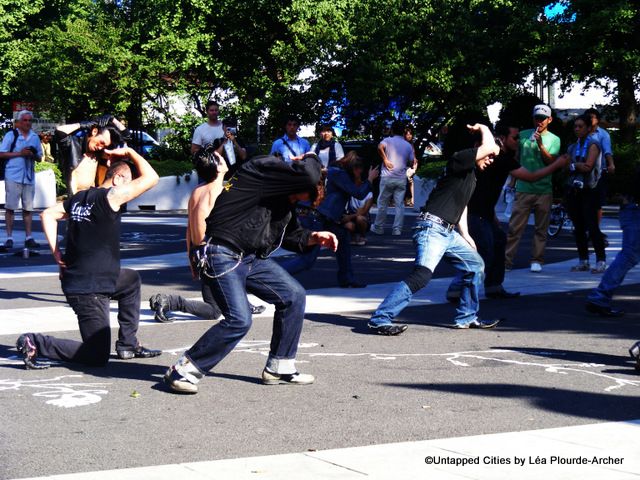
Yoyogi park Rockabilly dancers
Every Sunday afternoon, members of the Tokyo Rockabilly Club meet at the entrance of Yoyogi Park, near the Harajuku train station. They put on quite a show, loudly blasting classic American Rock and roll or Japanese covers of such songs as they show off their slick dance moves.
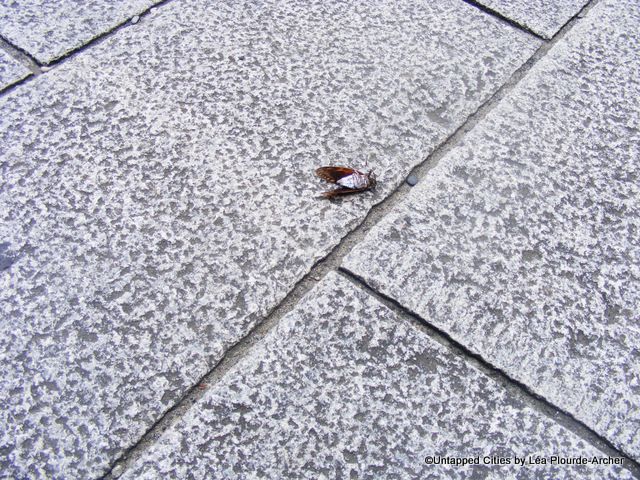
Cicadas
It wouldn’t be summer in Tokyo without the sound of the Semi (Japanese Cicada). The mating song emitted by males is one of the loudest insect-produced sounds in the world (up to 120 decibels). For those not accustomed to it, the volume can become quite overbearing as it plays almost non-stop during the daytime. Different species produce different sounds: some sing in a high-pitched manner, while others emit a softer trilling sound. The continuous repetition of the noise creates a buzzing that can come off as similar to an electronic, almost mechanical beat. Parks and tree-lined streets are the place to go to hear this sound.
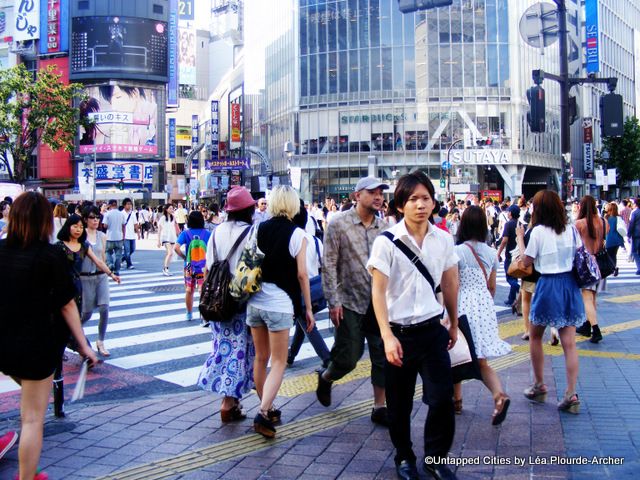
Street crossings
When 30 million people live in one city, street crossings, like the famous Shibuya pedestrian scramble, are bound to be noisy. As hundreds, even thousands of people walk from one street corner to another, many sounds emerge:
” ¢ The audible vibrations produced by the footsteps
” ¢ The clicking of heels so beloved by trendy Japanese women
” ¢ The music coming from headphones, cars and adverting screens on buildings nearby.
” ¢ The frequently used bird sounds and children’s nursery rhymes that help blind people cross the street
” ¢ The remarkably quiet but numerous conversations happening around you.
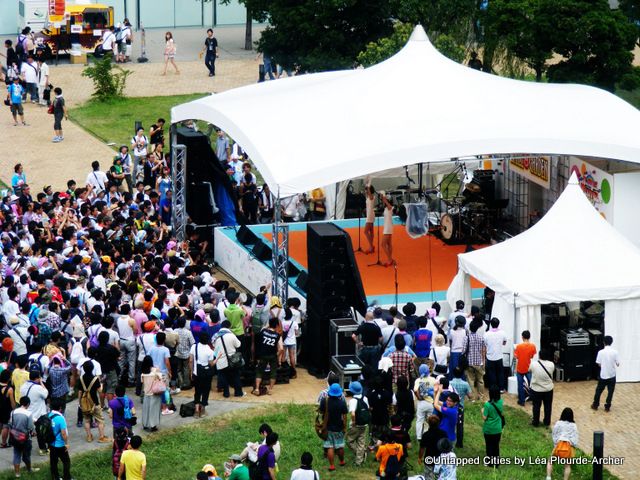
Summer festivals
During the summer months, there are many festivals, big and small, happening in Tokyo. On any given day, there’s bound to be something happening somewhere on the city’s streets. Just as you are turning a street corner, you could find yourself right in the middle of a random festivity. The most frequent sounds of celebration heard in Tokyo are religious parades, pop concerts, and fireworks displays.
The mix of elements
Tokyo’s soundscape, much like its layout, works as an organized chaos. Sounds are constantly coming from everywhere, which can be a bit overwhelming for visitors who aren’t used to this type of noise level. However, when you take a minute to listen, every element you hear seems to come together in a strange but coherent pattern. It’s the beat of summer in Tokyo.
Subscribe to our newsletter